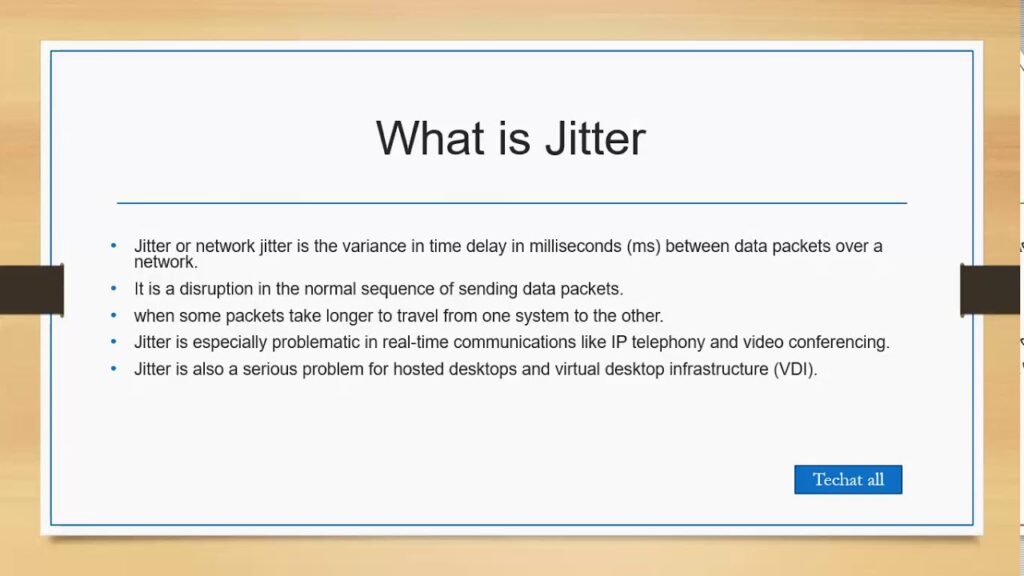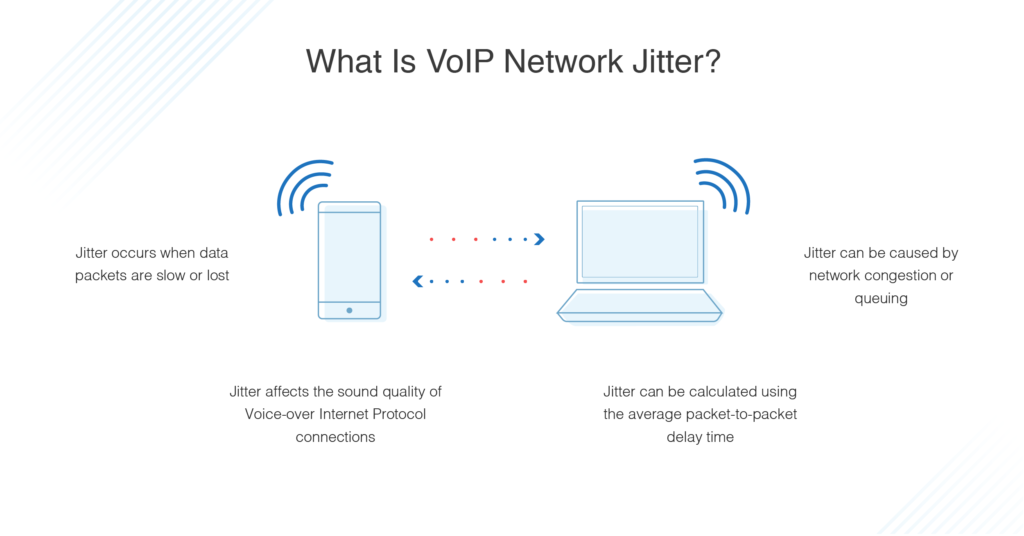How To Calculate Jitter In Network. If you use real-time, online apps frequently, you’re probably aware with the terms ping and jitter, which can both influence your experience.
Jitter is more relevant in applications like VoIP calling, whereas ping is more linked with gaming. We’ll learn more about jitter and how it affects your experience in apps like VoIP calling in this article.
Table of Contents
What Exactly Is Jitter?
To grasp the concept of jitter, you must first grasp the concept of ping (delay). Ping rate, also known as latency, the time it takes for a request to sent to a server and for a response to received on your device.

Jitter is the average delay in time between consecutive ping measurements from a device to a specific server (host). Milliseconds used to measure it.
How To Calculate Jitter?
Let’s imagine we take 5 ping readings to a specific server over a period of time. The following are the ping rate (or latency) readings: 32ms, 50ms, 44ms, 28ms, and 36ms.
The timing difference between consecutive pings is then 18 milliseconds (50–32), 6 milliseconds (50–44), 16 milliseconds (44–28), and 8 milliseconds (36–28), respectively.
Also Read:How To Watch Previously Watched Videos On Facebook 2022
As a result, the jitter may calculated as follows:
Jitter (J) = (18 + 6 + 16 + 8)ms / 4 [Average of Time differences]
Or, J = 48ms / 4
Or, J = 12ms
As a result, in the case above, the computed jitter is 12 ms.
While Ping used to measure the responsiveness of a network connection, Jitter used to determine the network’s stability. The lower the jitter and the more solid the network connection, the more constant the ping.
Packet loss can occur when jitter is significant, especially in real-time applications. When a packet does not arrive, arrives out of order, or arrives too late, it referred to as packet loss. In real-time (RTP) transmissions, lost packets are ignored and never resent.
Jitter impairs your experience in video conferencing, VoIP calling, online gaming, and other activities.
Example:
Have you ever had a video conference call with a problem where the video is distorted or the speaker’s voice is jumbled or illegible? That’s jitter, which generated by a shaky network on your end or at the speaker’s end.
What Level Of Network Jitter Is Acceptable?
It is dependent on the real-time programme that you are attempting to use. The average one-way jitter should be less than 30ms, according to Cisco.
What Causes Jitter?

The variation in ping times causes jitter. As a result, the factors that affect latency frequently also affect jitter.
The following are some of the factors that influence jitter:
- Network congestion
- Available Internet bandwidth
- Wireless Network Interference
- Weak Network Hardware
- Lack of packet prioritization
Note: Packet prioritisation is a software function that improves VoIP and video conversation quality by prioritising audio/video data packets over other network traffic. Most VoIP communication devices, as well as conferencing software like Zoom or Webex, provide this feature.
The majority of these elements are discussed in detail in our section on ping rate considerations.
How To Get Rid Of Jitter
To reduce jitter, make sure your networking devices, such as routers, switches, VoIP phones, and other VoIP phones, as well as the application you’re using, use QoS techniques to manage jitter. Other methods, such as jitter buffering, can also help a network reduce jitter.
You may reduce jitter even more by optimising your network’s latency. This can be accomplished by applying the following measures:
- Switching to a wired Ethernet connection, if possible
- Improving your Internet connection speed and bandwidth
- Prioritizing your network connections
- Upgrading your network hardware
You may read more about how to reduce ping in our dedicated section.
We hope you find this information helpful in troubleshooting your Internet connection’s severe jitter issues.
FAQ
How To Calculate Jitter In Network
Let’s imagine we take 5 ping readings to a specific server over a period of time. The following are the ping rate (or latency) readings: 32ms, 50ms, 44ms, 28ms, and 36ms.
The timing difference between consecutive pings is then 18 milliseconds (50–32), 6 milliseconds (50–44), 16 milliseconds (44–28), and 8 milliseconds (36–28), respectively.
As a result, the jitter may calculated as follows:
Jitter (J) = (18 + 6 + 16 + 8)ms / 4 [Average of Time differences]
Or, J = 48ms / 4
Or, J = 12ms



